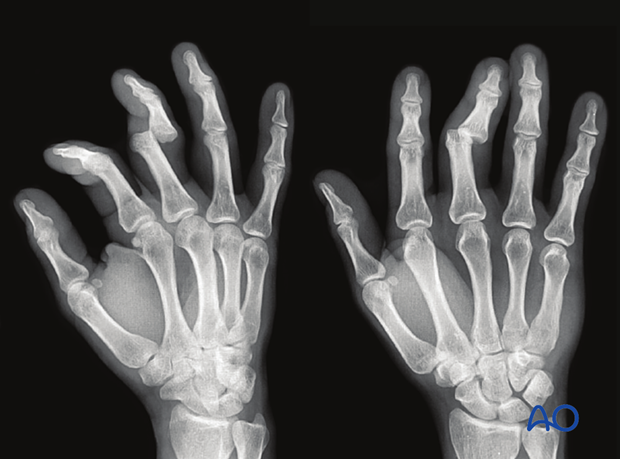Dislocation of the proximal interphalangeal joint
Definition
Dislocations of the proximal interphalangeal (PIP) joint are classified according to AO/OTA as 70E2.2–5[5], where 2–5 indicates which finger is involved.
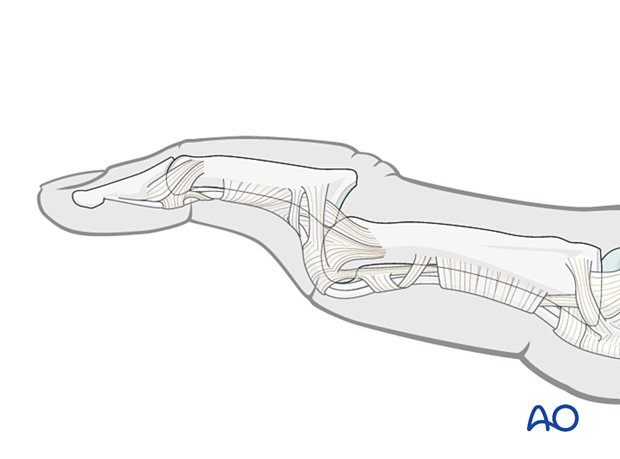
Dislocations
While dislocations and ligament injuries are common in the hand, they are most common at the PIP joint.
The spectrum of these lesions ranges from minor ligamentous stretching (sprains) to complete disruptions of the ligaments.

Dislocations of the PIP joint are classified by the direction of displacement of the middle phalanx. They can be palmar, dorsal, lateral, or lateral rotatory.
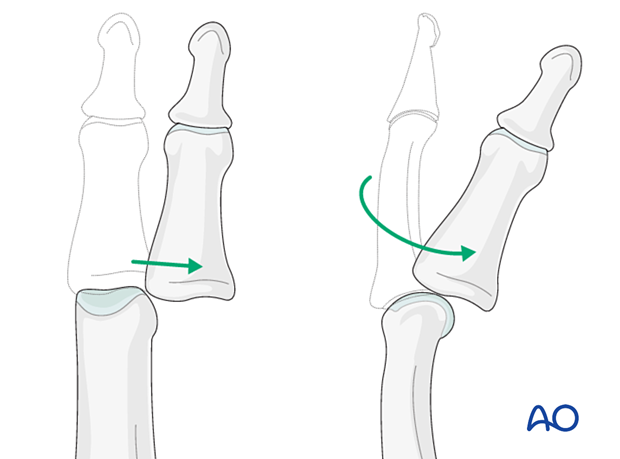
Mechanism of the injury
Typically, these injuries occur as a result of lateral deviation and rotation, with the PIP joint in semi-flexion. This happens during sporting activities, or while catching a finger in rotatory machines, such as drills, etc.
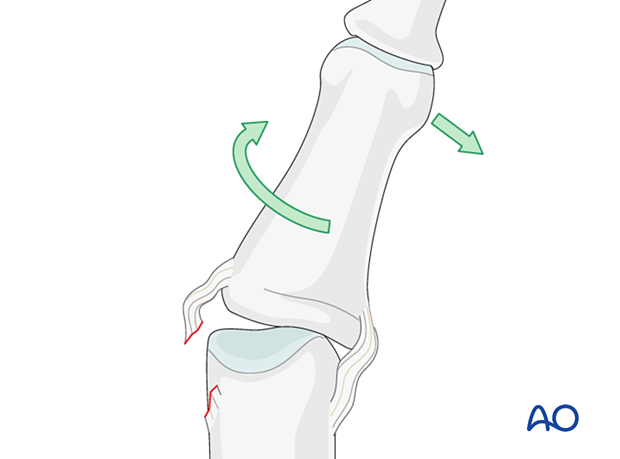
Ligament injuries
The collateral ligament usually tears at one of two locations:
- At its attachment to the proximal phalanx
- At its attachment to the volar plate and middle phalanx
These injuries may be accompanied by a partial lesion of the volar plate.
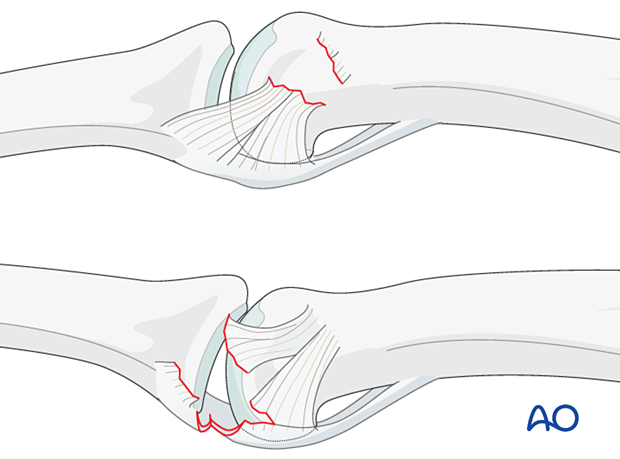
Deforming forces
Boutonnière deformityWhen the central slip is detached, the lateral bands are palmarly displaced and pull the distal interphalangeal (DIP) joint into hyperextension.
This creates a lesion like a buttonhole (“boutonnière”) in the extensor mechanism through which the head of the proximal phalanx perforates dorsally.
The flexor digitorum superficialis (FDS) pulls proximally on the middle phalanx, forcing the PIP joint into flexion.
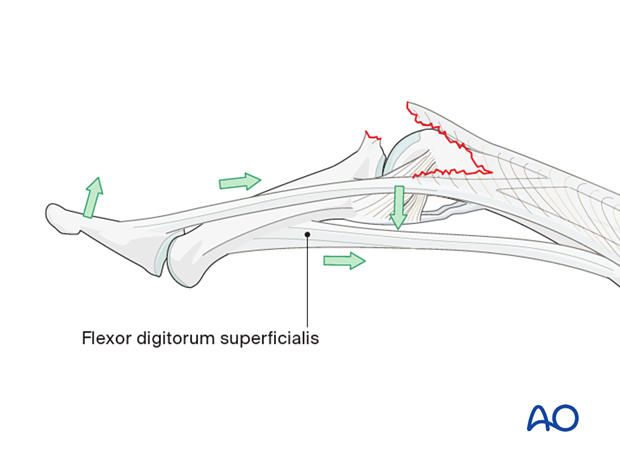
If the middle phalanx is palmarly dislocated at the PIP joint by the energy of the trauma, the flexor digitorum profundus (FDP) pulls the DIP joint into flexion.
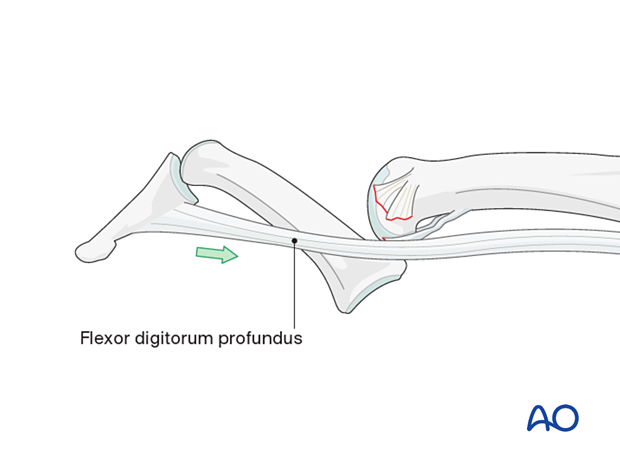
Associated fractures
Lateral subluxation can be accompanied by a condylar avulsion fracture, or a plateau (impaction) fracture.

Recognizing subluxation
In the lateral view, the dorsal cortical profiles of the proximal and middle phalanges should be collinear. Any axial malalignment is a clear indication of subluxation.
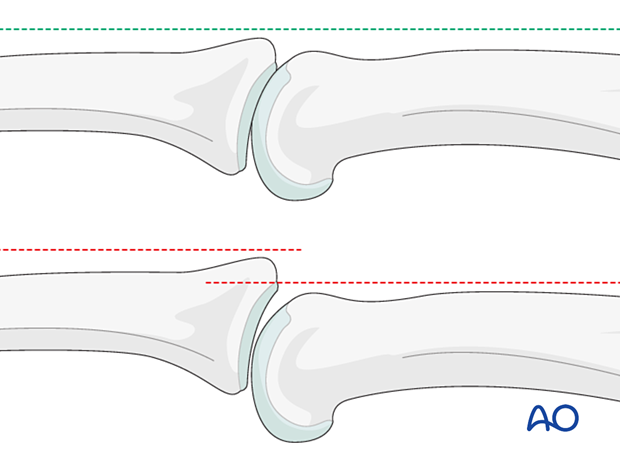
Another indication of subluxation is the presence of a so-called V-sign in the lateral x-ray.
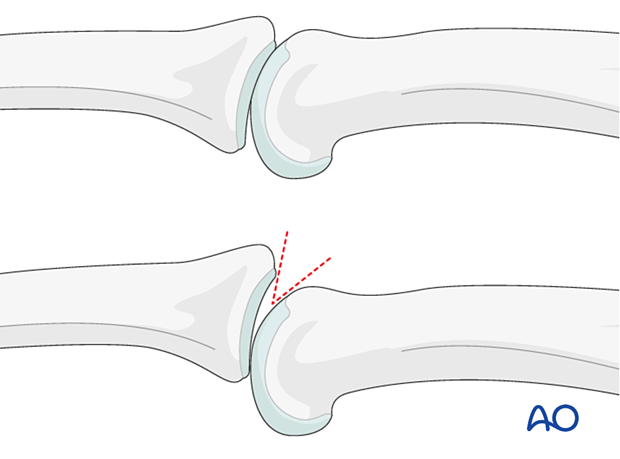
Imaging
Oblique and AP x-rays should be taken.
This x-ray shows a palmar dislocation of the PIP joint of the 5th finger.
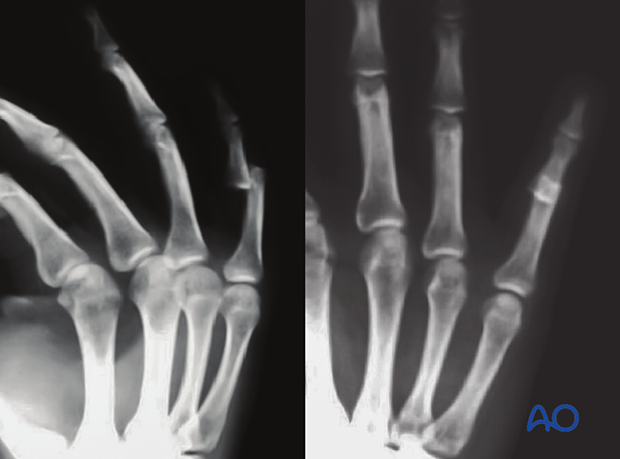
This x-ray shows relocation of the PIP joint without an associated fracture of the same case.
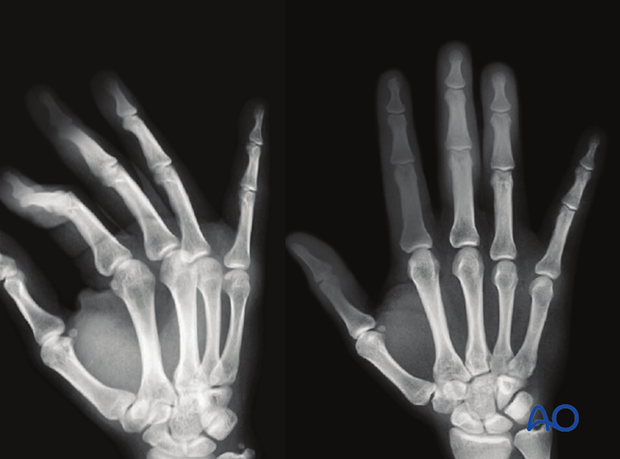
This oblique and AP x-ray show a lateral dislocation of the PIP joint of the 3rd finger.
